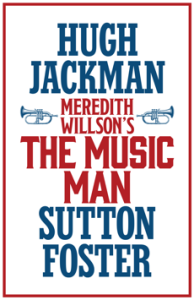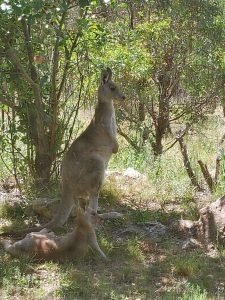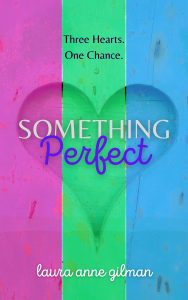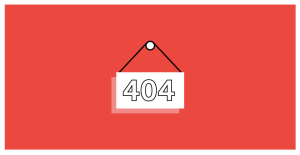It’s been a stressful week (month), even by the standards of the 2020’s. And in four days, I’m going to do something I swore I never would. I am going to hand my dog over to a trainer, and walk away. For three weeks.
Three. Weeks.
They call it “board and train.” We’ve been referring to it as “puppy boot camp.”
I’m stressing out about it, hard.
I know that I’ve taken Max a long way in 20 months. She’s a sweet, loving, playful girl with excellent leash manners, she knows all her commands (even if she still has trouble with her recall), she’s a great car-ride companion, and is A+ at letting me know when she has to go out (and holding it, if I can’t get to her right that second). And she hasn’t destroyed a single thing other than her own toys since she finished teething. She’s practically perfect, and the not-perfect….well, that’s just a matter of fine-tuning.
But she still reacts with fear-aggression under certain circumstances, and while I can handle it, that’s beyond my current paygrade to fix.
Part of me feels like I’ve failed, that I wasn’t “good enough” or attentive enough to be and do everything Max needs. That somehow it’s my fault she has that particular quirk.
It’s not. I’ve had trainers reassure me on that fact: dog brains are mysterious things, same as human brains, and sometimes they just… get wired a certain way.
Part of me believes if I’d put in a little more time, studied a little more, done more exercises, I could have done the rewiring myself.
And maybe I could have. Probably I could have. I know the basics, it would just require, well, a lot of time. Constant, dedicated time. And I have a job (several, in fact) and a real need for sleep.
I’m reminding myself that just as writers need editors and copyeditors, sometimes puppies need a little extra help, too. Nobody’s good at everything, and we don’t have to be.
And Max isn’t going to love me any less for it.
So she will go to Puppy Boot Camp, spending three weeks with S., who will give her the 24-hour professional care and training needed to erase old habits and build new ones. And when we are reunited, S. will teach me how to maintain and build on those.
It’s a good thing. It’s also a bloody expensive thing, but it’s a good thing.
And maybe, rather than boot camp, it will turn out to have been Officer Training School.
I’m going to miss her, a lot. But I also suspect the time will be well-spent, reconnecting with (spoiling) Castiel the Kitten of Thursday, and also writing a LOT in the time not spent exercising and training. Which is good, because I’m supposed to be writing the follow-up to SOMETHING PERFECT next month….
But until then, Max and I are keeping each other chill.

 Elie Mystal, who writes about legal matters for The Nation, has written an excellent book about what’s wrong with the U.S. Constitution: Allow Me to Retort: A Black Guy’s Guide to the Constitution. I reviewed this book for Washington Lawyer — the District of Columbia Bar magazine — and I recommend that everyone who is concerned about the future of the United States and our democracy read it.
Elie Mystal, who writes about legal matters for The Nation, has written an excellent book about what’s wrong with the U.S. Constitution: Allow Me to Retort: A Black Guy’s Guide to the Constitution. I reviewed this book for Washington Lawyer — the District of Columbia Bar magazine — and I recommend that everyone who is concerned about the future of the United States and our democracy read it.
 I’m going to New York in June, and just bought tickets to see Hugh Jackman and Sutton Foster in The Music Man. I am ridiculously excited about it.
I’m going to New York in June, and just bought tickets to see Hugh Jackman and Sutton Foster in The Music Man. I am ridiculously excited about it.
 Terrorists of Irustan to the deeply touching The Glass Harmonica, to the YA “Horsemistress” series (as Toby Bishop), to the music-themed Mozart’s Blood and The Brahms Deception, the scope and insightfulness of her writing mark her as a major voice in fantasy and science fiction. Her newest novel, The Great Witch of Brittany, will be released in February 2022.
Terrorists of Irustan to the deeply touching The Glass Harmonica, to the YA “Horsemistress” series (as Toby Bishop), to the music-themed Mozart’s Blood and The Brahms Deception, the scope and insightfulness of her writing mark her as a major voice in fantasy and science fiction. Her newest novel, The Great Witch of Brittany, will be released in February 2022.

 I have rituals in the morning. Getting up is hard enough without making a bit of a routine of it. So there is the shower ritual (with various subsets), then the coffee ritual, and then the email-and-internet ritual. The last mostly involves throwing out a virtual ream of political emails and ads, scanning for the one or two emails that actually should get to me (most of them are things like contacts from the doctor or pharmacy–like the olden days of mail, you rarely get something personal that you should actually, like, read). And then I do my morning web-crawl.
I have rituals in the morning. Getting up is hard enough without making a bit of a routine of it. So there is the shower ritual (with various subsets), then the coffee ritual, and then the email-and-internet ritual. The last mostly involves throwing out a virtual ream of political emails and ads, scanning for the one or two emails that actually should get to me (most of them are things like contacts from the doctor or pharmacy–like the olden days of mail, you rarely get something personal that you should actually, like, read). And then I do my morning web-crawl.